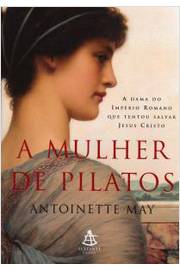

The show is worth seeing for many reasons, and the moving portrayal of the usual villain Pilate is one of them. The show masterfully exposes the emotional turmoil that befell both Pilate and Jesus in those infamous moments when they stood before each other. Roman governor, like Mary, is not spared a second look. Tom Hewitt as Pontius Pilate in “Jesus Christ Superstar” Depictions of him can be found in various galleries throughout the museum. As a result, Pilate’s likeness is found in many artistic forms and styles, from Old Master paintings, to icons, to stained-glass windows, to sculptures. Pilate’s singular actions are crucial to the Christian narrative of Jesus’s redemptive suffering.

There are also many works that feature Pontius Pilate in The Metropolitan Museum of Art. The traditional First Station – Jesus is Condemned – assures that the image of Pilate sentencing Jesus to death can be found in any Catholic church, such as St.

All churches feature the Stations of the Cross, devotional images that were invented in the Middle Ages as a means of allowing believers to walk with Jesus through his Passion without having to make an actual pilgrimage to the Holy Land. His New York Hiding Places: If you walk into any Catholic church in New York City, you’re guaranteed to see a likeness of Pilate. He is also sometimes portrayed in a subset of paintings known as Ecce Homo, which is the Latin translation of the phrase, “Behold the man,” which Pilate is recorded in John 9:15 as having said to the crowd after he had had Jesus beaten. Where to Find Him: Pilate figures prominently in trial scenes, in which a silent, accepting Jesus is brought before the procurator. He is usually pictured in a seat of judgment and often he is depicted with or near a basin of water, which he used to symbolically rid himself of responsibility in the condemnation of Jesus. How to Know Him: Pontius Pilate is often portrayed in the contemporary clothing of a government official in the town, province, or country from which the artist comes, making his character easily identifiable and his action understandable to the viewer. Style of Rembrandt (Dutch, 17th century), ca.


 0 kommentar(er)
0 kommentar(er)
